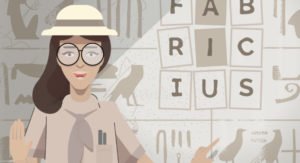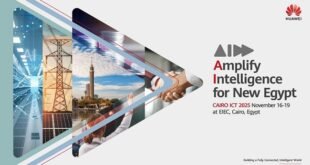Google announced today the launch of a new machine learning tool that can help decode
Egyptian hieroglyphs in Arabic and English. The tool, called Fabricius, will provide people
around the world with an interactive experience to learn about hieroglyphs, while facilitating the work of Egyptologists and raising awareness about the history, heritage of
the ancient Egyptian civilization.
Fabricius can be found on the free Google Arts & Culture app that makes the art, heritage
and cultural wonders of over 2000 cultural institutions from around the world more
accessible. Everyone can experience these treasures through technologies such as Virtual
or Augmented Reality, high resolution imagery, Street View and much more.
Through machine learning Fabricius will help speed up the process of collating, cataloguing
and understanding ancient hieroglyphs. The “work” section of the tool currently allows
translation of hieroglyphs into English, while Arabic translation will be available soon. It
also provides an opportunity for people to learn about, write and share their own messages
using hieroglyphs. Culture-lovers will also be able to browse through a dedicated online
page on Google Arts & Culture highlighting pharaonic culture, including King Tutankhamun,
the Pyramids of Giza and the Book of the Dead.
“We are very excited to be launching this new tool that can make it easier to access and
learn about the rich culture of Ancient Egypt. For over a decade, Google has been capturing
imagery of cultural and historical landmarks across the region, from Egypt, the UAE,
Lebanon, Palestine, Tunisia and more, while making it available on Maps, Street View and
Google Arts & Culture.’ said Chance Coughenour, Head of Preservation at Google Arts and
Culture. “Together with our partners, we remain committed to promoting the rich history
and heritage of the region, and to make it accessible to everyone.” he added.
Since 2013, Google has digitized rich imagery of over 20 historical landmarks and sites,
including the Pyramids of Giza in Egypt, Petra in Jordan, Sheikh Zayed Grand mosque in the
United Arab Emirates, Baalbeck & the Temple of Jupiter in Lebanon and the Amphitheatre
of El Jem in Tunisia and more. Google has also added digital exhibitions of Palmyra and the
Ummayed mosque in Syria which can be found on the Arts & Culture website and app.
Fabricius was created in collaboration with the Australian Center for Egyptology at the
Macquarie University in Australia, Psycle Interactive, Ubisoft and Egyptologists around the world.


 التكنولوجيا وأخبارها بوابة مصر لأخبار تكنولوجيا المعلومات والإتصالات وفي أفريقيا كما تعتبر مصدر رئيسي للمعلومات حول تكنولوجيا المعلومات والاتصالات والفرص الاستثمارية المرتبطة بالاقتصاد الرقمي في المنطقة بالكامل
التكنولوجيا وأخبارها بوابة مصر لأخبار تكنولوجيا المعلومات والإتصالات وفي أفريقيا كما تعتبر مصدر رئيسي للمعلومات حول تكنولوجيا المعلومات والاتصالات والفرص الاستثمارية المرتبطة بالاقتصاد الرقمي في المنطقة بالكامل







